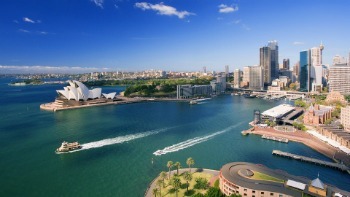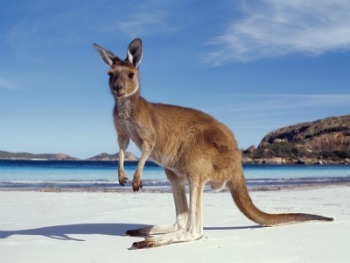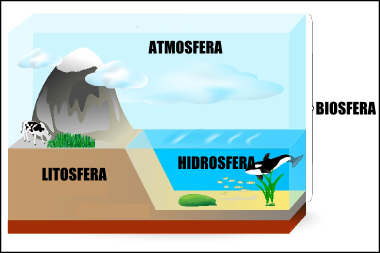Oceania is the smallest continent in the world. Located in the southern hemisphere, it comprises Australia and the Pacific Islands (Polynesia, Melanesia and Micronesia).
In operational terms, the aim is to divide the planet into continental groupings and, therefore, all the islands are associated with the continent of Australia or Australasia.
 Oceania Map
Oceania Map
Oceania is the largest grouping of islands on the planet, with more than 10 thousand islands and 14 countries.
You countries of oceania they are:
- Australia
- Federated States of Micronesia
- fiji
- Solomon Islands
- Indonesia
- Kiribati
- Nauru
- New Zealand
- palau
- Papua New Guinea
- Western Samoa
- tonga
- Tuvalu
- Vanuatu
Australia occupies 90% of the continent's total territory. In addition to the countries, they are overseas territories:
- Mariana Islands (US dominated)
- Caroline Islands (dominated by Micronesia)
- New Caledonia (dominated by France)
- Australian Antarctic Territory (dominated by Australia)
- Ross Dependency (dominated by New Zealand)
- Land Adelia (dominated by France)
- American Samoa (dominated by the US)
 Australia landscape photo
Australia landscape photo
Oceania Features
1. geographical composition
The formation of the territory is predominantly of volcanic origin, which gives the region an intense tectonic and volcanic activity.
2. Area
Its area is 8,480,355 km², with varying demographic density: Australia 2.2 inhab/km²; Papua New Guinea 7.7 inhab/km²; Nauru 380 inhabitants/km²; Tonga 163 inhabitants/km² and the territory of Australia correspond to the largest portion of Oceania, with about 90% of the continent.
The largest cities in Oceania are located in Australia and are Sydney, Melbourne, Brisbane and Perth. Other important cities are Auckland and Wellington, New Zealand, and Port Moresby, capital of Papua New Guinea.
3. Population
All the islands of Oceania have a population made up of indigenous people. However, in Australia and New Zealand white Europeans constitute the majority of the inhabitants, especially of British origin.
With a population of around 32 million inhabitants, Oceania is a predominantly urban region. While 75% of the population lives in cities, 25% of oceans live in the countryside.
In Australia and New Zealand, 85% of the population resides in urban areas, while on the islands most people are in rural areas.
4. Economy
The most developed countries (Australia and New Zealand) stand out for the manufacture of industrialized products and high technology. On the islands, extractivism and agriculture are practiced, as well as tourism.
 New Zealand landscape photo
New Zealand landscape photo
5. Fauna, Vegetation and Climate
The fauna of Oceania has many animals, however, its isolated position has led to the emergence of some exotic species found only in that region. Of these, the kangaroos stand out.
Other animals typical of Oceania are: koala, dingo, cockatoo, Tasmanian Devil, platypus, kiwi, black swan, elephant seal, kaluta and kowari.
Its flora is predominantly made up of tropical forests, which coexist with the desert climate in the interior of Australia and the tropical climate in the islands.
 Kangaroo
Kangaroo
Culture of Oceania
In Oceania, English is the most widely spoken language, but it is not the only language on the continent. There is also space for the French language and native dialects there.
In religious terms, Christianity predominates, being led by 27% of Catholics and 24% of Protestants.
Due to the heat, it is customary to wear light and comfortable clothing.
Typical Maori tattoos are known around the world and originate with the indigenous peoples of New Zealand. For the Indians, the mokas - as they are called - have a sacred character.
Colonization and History of Oceania
Call of brand new world, Oceania was the last continent to be found by Europeans.
The term Oceania is used in several languages to indicate a continent that encompasses Australia and contiguous Pacific islands. The word is formed by the addition of "ocean" plus the suffix "ia", like toponyms like Germania and Transylvania.
The first massive wave of emigrants only happened around 6000 BC. Ç. with the arrival of Austronesians from Taiwan. They spread through the Philippines and the East Indies, until they reached New Guinea.
In the modern period, the British annexed Australia to their domains in 1770, when there were around 300,000 natives. Subdivided into about 600 tribes, which were in a very primitive cultural stage, this fact facilitated the domination of the English.
In the 18th century the occupation was carried out by prisoners and exiles, as well as by the establishment of a small number of colonists. They dedicated themselves to livestock development, one of the main activities so far.
In addition to livestock (especially sheep) a successful wheat production had been developed.
As a result of this domination, the indigenous population declines. The British impose their culture and way of life, making the natives a minority on the continent.
Oceania Curiosities
- Oceania is the smallest continent in the world and also the youngest.
- Despite being made up of more than 10,000 islands and 14 countries, Australia alone occupies 90% of its territory.
- Australia does not border any other country.


